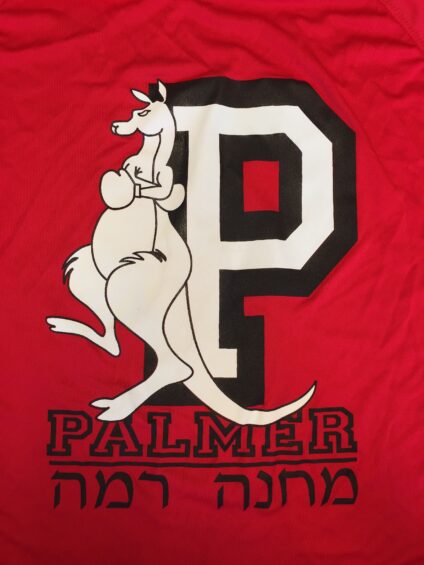The History of the ROO
The Palmer Fighting Roo is our beloved camp mascot. For our Tzad Bet (B-Side) hanichim (campers), we have a Roo perek (period) every regular day, and we celebrate Yom Roo twice a summer when we play a day of competitive sports against Camp Ramah in the Berkshires. The Roo appears frequently on t-shirts, jerseys, signs, and other mosaic art projects around camp.
But what is the Roo and why do we have a mascot?
The origins of the Palmer Fighting Roo are completely grassroots. And, as is often the case with history, there are competing accounts of who actually came up with the idea. In the summer of 2013, a few veteran madrichim (counselors) decided that what Camp Ramah New England needed was a mascot. Although we had been playing sports against other camps for years, we never had an official mascot! After batting around a number of different suggestions, this group of madrichim settled on the idea of the Palmer Fighting Roo, both because it was original (how many teams do you know with a kangaroo mascot?), and because of the connection to the Hebrew word ruach, which means spirit. Now, we don’t just have tons of ruach at Camp Ramah, we have ROO-ach!
The Roo quickly caught on, and before long the Roo had an official design, started appearing on camp clothing, and even had a few different chants and songs. The official Palmer Fight Song is now sung regularly, especially loudly and enthusiastically on Yom Roo.
Here is the song:
When it comes to Ramah camps
If you ever had to choose
The choice would be obvious
We’re the Palmer Fighting Roos (Roo! Roo! Roo!)
From A-Side to B-Side
Our ROO-ach leads the way
So go! (fight!) go! (fight!) go! (fight!) go!
Roos will win the day!
As with most camp traditions, the Palmer Fighting Roo has quickly grown from an idea by just a few madrichim having fun to an integral part of camp culture. More than anything, the Roo demonstrates the tremendous influence that everyone in our camp community, specifically our college-aged tzevet (staff-members), has to affect culture and change at Camp Ramah.
